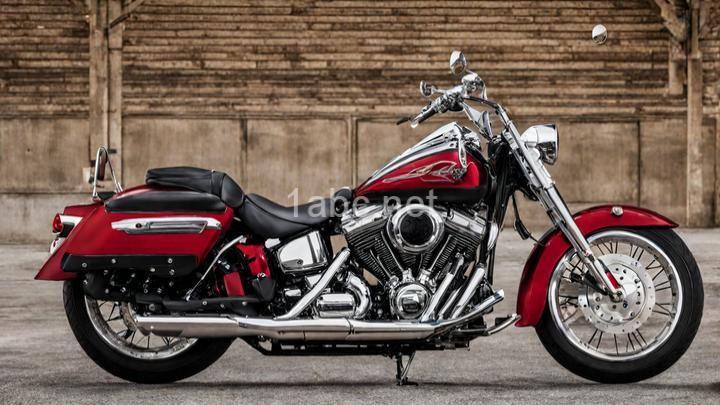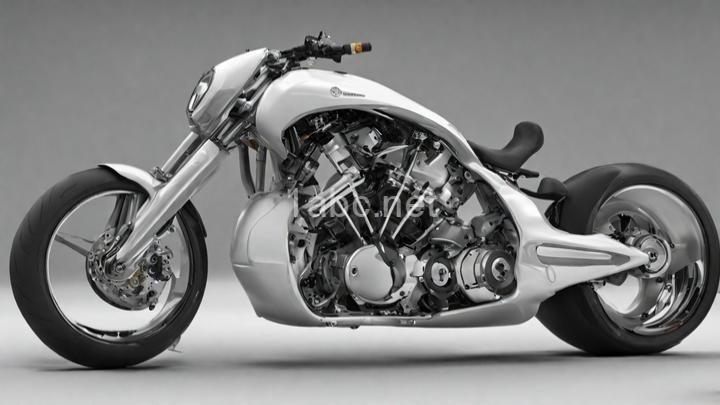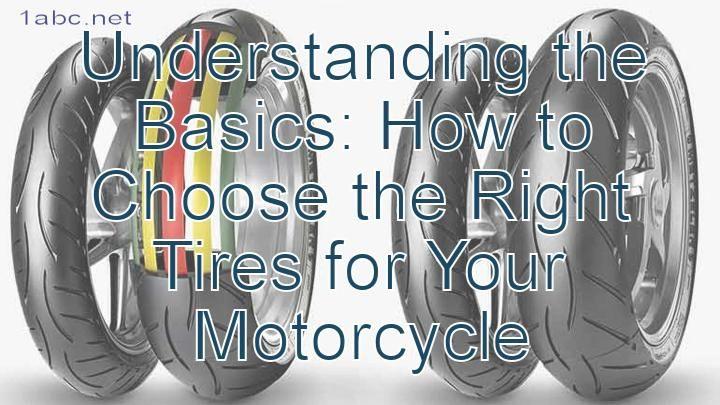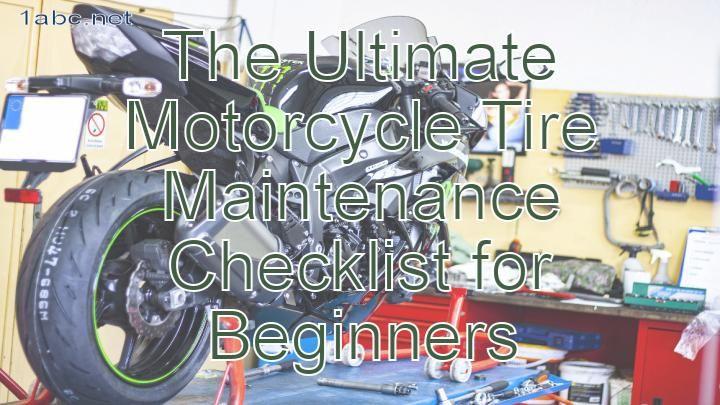Step-by-Step Guide: Changing Motorcycle Tires for Novice Riders
Introduction:
I. Gathering the Necessary Tools and Equipment:
II. Preparing the Work Area:
III. Removing the Old Tire:
1. Deflating the Tire:
2. Loosening the Bead:
3. Removing the Tire from the Rim:
IV. Installing the New Tire:
1. Preparing the New Tire:
2. Mounting and Seating:
3. Inflating and Balancing:
V. Reinstalling the Wheel:
Conclusion:
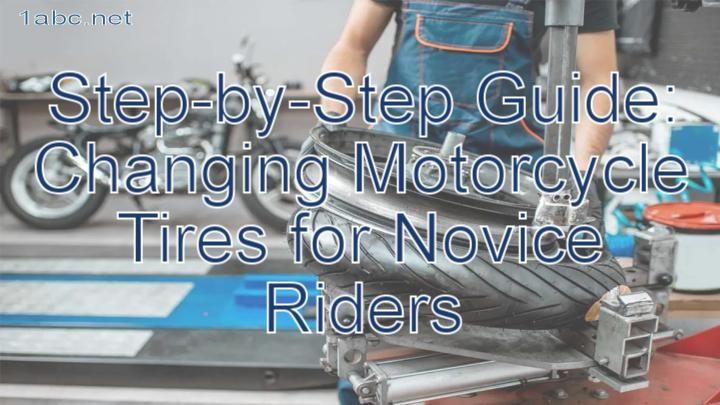
Introduction:
Maintaining motorcycle tires is essential for the overall safety and performance of your motorcycle. As a novice rider, learning how to change your motorcycle tires might seem like a daunting task. However, with the right guidance and a little practice, changing your motorcycle tires can be a manageable and empowering skill to acquire. In this step-by-step guide, we will walk you through the process of changing your motorcycle tires, ensuring that you have the necessary tools, prepare the work area properly, remove the old tire, install the new tire, and reinstall the wheel onto your motorcycle.
I. Gathering the Necessary Tools and Equipment:
Before diving into changing your motorcycle tires, it is crucial to gather all the necessary tools and equipment. Here is a list of commonly used items for changing motorcycle tires:
- Tire iron: This tool is used to pry the tire off the rim.
- Valve stem tool: It helps in deflating the tire by removing the valve core.
- Tire pressure gauge: Essential for checking the tire pressure before and after the installation.
- Rubber mallet: Used to seat the tire on the rim.
- Talcum powder: Helps in lubricating the tire bead during installation.
- Pliers: Useful for removing and reinstalling the wheel axle.
- Wrenches and sockets: Required to loosen and tighten bolts.
- Wheel balancing stand: Optional but recommended for balancing the tire after installation.
- Bead breaker: Optional, but it makes breaking the bead seal easier.
It's worth noting that some motorcycles may require additional tools or have specific requirements. Always consult your motorcycle's owner manual for precise instructions related to your model.
II. Preparing the Work Area:
To ensure a smooth and safe tire changing process, it is essential to prepare your work area properly. Here are some steps to follow:
- Find a clean and well-lit space: It's important to have a clear workspace that allows you to see what you're doing and prevents dirt or debris from getting into the tire or rim.
- Use gloves and eye protection: Changing motorcycle tires can be a messy process, and wearing gloves will protect your hands from any sharp edges or dirt. Eye protection is also crucial to shield your eyes from debris.
III. Removing the Old Tire:
1. Deflating the Tire:
Before attempting to remove the tire, you must deflate it completely. To do this, follow these steps:
- Locate the valve stem on the wheel.
- Use the valve stem tool to remove the valve core.
- Allow all the air to escape from the tire.
Remember, safety is paramount, so take care when removing the valve core as it may release air rapidly.
2. Loosening the Bead:
The bead is the edge of the tire that seals against the rim. Breaking this seal is necessary to remove the tire. Follow these steps to loosen the bead:
- Position the tire iron between the rim and tire, near the valve stem.
- Apply even pressure and leverage to pry the tire away from the rim.
- Slowly work your way around the tire, repeating this process until the entire bead is loosened.
Be cautious not to damage the rim or tire while using the tire iron.
3. Removing the Tire from the Rim:
Once the bead is loosened, it's time to remove the tire from the rim. Follow these steps:
- Insert a tire iron between the tire and rim, slightly away from the valve stem.
- Pry the tire iron downwards to lift the tire over the rim.
- Gradually work your way around the rim, using additional tire irons if necessary, until one side of the tire is completely off the rim.
- Repeat the process on the other side of the tire until the tire is fully removed from the rim.
Take your time and be patient when removing the tire to avoid damaging the rim.
IV. Installing the New Tire:
1. Preparing the New Tire:
Before mounting the new tire on the rim, it is essential to inspect it for any damage or defects. Check for any bulges, cuts, or uneven wear. If the tire appears to be in good condition, proceed with the installation.
2. Mounting and Seating:
To mount the new tire on the rim, follow these steps:
- Apply a small amount of talcum powder to the inside of the tire to help lubricate the bead during installation.
- Position one side of the tire onto the rim, starting near the valve stem.
- Use your hands to push the tire onto the rim, working your way around until it is fully seated.
- If necessary, use a rubber mallet to gently tap the tire into place, ensuring it is evenly seated on the rim.
Again, take care not to damage the rim or tire during this process.
3. Inflating and Balancing:
After the new tire is mounted and seated on the rim, it's time to inflate it to the recommended tire pressure. Follow these steps:
- Attach the valve core back into the valve stem.
- Connect a proper air source, such as a compressor or manual pump, to the valve stem.
- Gradually inflate the tire, periodically checking the tire pressure with a gauge to ensure it reaches the recommended level.
- Once inflated, check for any signs of imbalance. If necessary, use a wheel balancing stand to fine-tune the balance.
V. Reinstalling the Wheel:
After successfully installing the new tire, it's time to reinstall the wheel onto your motorcycle. Follow these steps:
- Align the wheel with the axle, ensuring it slides in smoothly.
- Securely tighten the axle bolts, following the torque specifications provided in your motorcycle's owner manual.
- Double-check that the wheel is properly aligned and spins freely.
Conclusion:
Changing motorcycle tires may seem intimidating for novice riders, but with practice and the right guidance, it is a skill that can be mastered. By following the step-by-step guide provided, you can successfully change your motorcycle tires, ensuring your safety and the optimal performance of your motorcycle. Remember to always consult your motorcycle's owner manual for specific instructions related to your model and seek professional help if necessary. Happy riding!
FREQUENTLY ASKED QUESTIONS
What tools do I need to change motorcycle tires?
To change motorcycle tires, you will need the following tools and equipment:
- Tire spoons or tire irons: These are used to pry the tire off the rim and install a new one.
- Bead breaker: This tool helps to break the bead between the tire and the rim, making it easier to remove the old tire.
- Tire stand: A stand will hold the wheel and tire securely in place while you work on it.
- Valve stem tool: This tool is used to remove and install the valve stem from the wheel.
- Tire lubricant: Lubrication helps to ease the tire installation process by reducing friction.
- Air compressor or hand pump: You will need a compressor or a pump to inflate the tire once it is installed.
- Torque wrench: This tool is essential for accurately tightening the lug nuts or axle bolts to the manufacturer's specifications.
- Safety goggles and gloves: Always wear goggles to protect your eyes and gloves to protect your hands during the tire-changing process.
Additionally, it's recommended to have a service manual specific to your motorcycle model, as it can provide detailed instructions and specifications for changing tires.
How often should I change my motorcycle tires?
The frequency of changing motorcycle tires depends on various factors. Here are some general guidelines:
- Tread Wear: Monitor the tread depth of your tires regularly. Once the tread depth reaches the wear indicator bars, or if it becomes noticeably shallow, it's time to replace the tires.
- Tire Age: Tires degrade over time, even with minimal use. Generally, motorcycle tires should be replaced every five years, regardless of tread wear. Check the manufacturing date on the sidewall to determine the age of your tires.
- Riding Conditions: If you frequently ride in challenging conditions like off-road trails or wet roads, your tires may wear out faster. Inspect them regularly and replace if necessary.
- Maintenance: Proper tire maintenance, including regular inflation checks, balancing, and alignment, can extend the lifespan of your tires. Neglecting maintenance can lead to premature wear and potential safety hazards.
Always consult your motorcycle manufacturer's recommendations and consider getting advice from a professional if you are unsure about the condition of your tires. It's essential to prioritize safety by using well-maintained and suitable tires for your motorcycle.
Is it necessary to remove the motorcycle wheels to change the tires?
No, it is not always necessary to remove the motorcycle wheels to change the tires. Depending on the type of motorcycle, some tires can be changed without removing the wheels. This process is known as "mounting and balancing" the tires. However, for some motorcycles, especially those with tube-type tires, it may be necessary to remove the wheels in order to change the tires. It is best to consult the motorcycle's owner manual or seek assistance from a professional if you are unsure about the specific requirements for your motorcycle.
How long does it typically take to change motorcycle tires?
The amount of time it takes to change motorcycle tires can vary depending on several factors, including the experience of the person changing the tires and the specific type of motorcycle. On average, a skilled technician can change a motorcycle tire in about 30 minutes to an hour. However, it's worth noting that this can be a more time-consuming process for those who are less experienced or working with certain types of tires that require additional steps, such as tubeless tires or tires with rim locks. Additionally, factors like the condition of the rims and any necessary maintenance or adjustments can also impact the overall time required for the tire change.
How do I know when it's time to replace my motorcycle tires?
Knowing when to replace your motorcycle tires is crucial for your safety on the road. Here are some indicators that it may be time to replace them:
- Tread Wear: Check the tread depth regularly. If the tread depth is worn down to 1/16th of an inch (or 1.6 mm) or less, it's time to replace the tires. You can use a tread depth gauge or look for the wear bars located between the treads.
- Irregular Wear: Inspect the tire surface for any irregular wear patterns, such as cupping, scalloping, or flat spots. These patterns can indicate alignment issues or other problems, and the tires should be replaced if such wear is present.
- Age of the Tires: Even if the tires show minimal wear, they should be replaced if they are more than 5 years old. Over time, the rubber compound deteriorates, leading to decreased grip and increased risk of failure.
- Cracks or Bulges: Inspect the sidewalls of the tires for any cracks, cuts, or bulges. These can weaken the tire's structure and result in blowouts. If you notice any such damage, replace the tires immediately.
- Loss of Performance: If you notice a significant decrease in traction, grip, or stability while riding, it could be a sign that your tires need to be replaced.
Remember to consult your motorcycle owner's manual for specific recommendations from the manufacturer regarding tire replacement intervals. It's always better to be proactive and replace your tires before they become a safety concern.
Can I reuse the old tire tubes or should I replace them as well?
It is not recommended to reuse old tire tubes. Over time, tire tubes can degrade and become more susceptible to punctures and failures. It is best to replace them along with the tires for optimal safety and performance.
What are the recommended tire pressure levels for my motorcycle tires?
The recommended tire pressure levels for your motorcycle tires can typically be found in your motorcycle's owner's manual or on a sticker located on the motorcycle itself. It is important to adhere to the manufacturer's recommended tire pressure for optimum performance, safety, and tire longevity.
